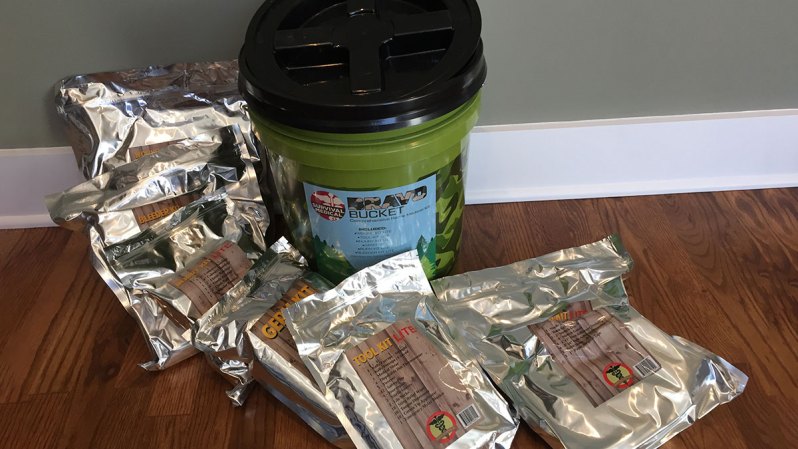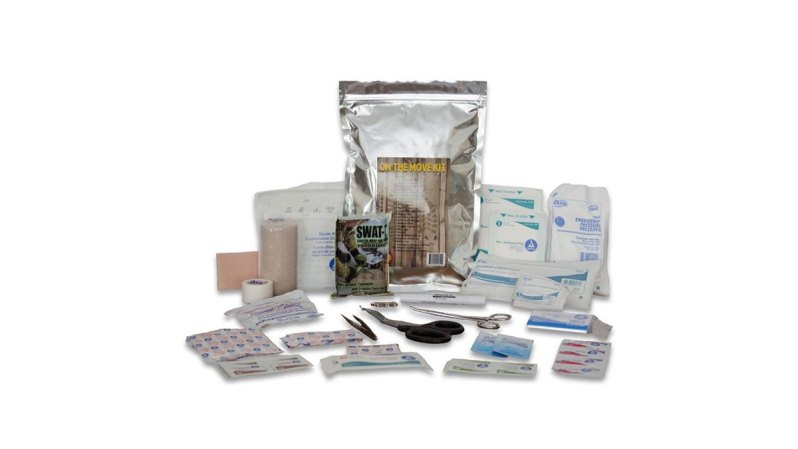Those of us who find ourselves in sudden need of first aid are seldom pleased by the occasion. Oh, sure, slicing open a finger, twisting an ankle, burning a forearm, or being repeatedly stung by wasps sounds like fun, but anyone who has suffered these and other common types of injuries knows it’s actually no picnic. Especially when you suffer said injury while on a twelve hour hike from the nearest road, let alone the provider of any medical assistance. If you do suffer an injury, ranging from the minor to the major, your experience will be a bit less wretched if you planned ahead and brought along a first aid kit from Survival Medical LLC. What you can expect from Survival Medical is, in short, good stuff for bad times.
Now listen here: When you’re at a restaurant or mall or movie or whatnot, you can safely assume the establishment has medical supplies on hand (if they like being in compliance with OSHA regulations, at any rate), and it’s probably safe to assume your place of employment has emergency gear ready (never hurts to check), but as for your own home, your vehicle, or your person when you’re out hiking, camping, or back country skiing, it’s your job to prepare for the medical emergencies you might face. Fortunately that job is made pleasantly simply thanks to the curation efforts of Survival Medical. Examples? Sure thing.
Say you’re a serious boater; you and the gang spend countless hours each summer out on the water catching fish, sipping drinks, towing tubes, and, oh, let’s say searching for sunken rum runners. If you want to be ready for the many maladies might come with life near the water, you’ll want the Survival Medical Coastal Kit tucked into boat’s hold or stashed near the dock. This 100% waterproof kit was assembled “for the coastal cruiser, serious boater, fishing guide, [or] savvy sailor.” It has all the standard wipes and bandages, tapes and antiseptics that you’d expect, along with multiple waterproof wound dressings, sunscreen, a water filter, and other clever components that might just come in handy (if not life saving) aboard a boat.

The outdoorsman, on the other hand, should give some thought to their, well, their Outdoorsman Kits. These are first aid kits carefully designed to suit various types of back-country activity, with weight being the decisive factor behind content curation. The Horse & Rider Kit, for example, is bulkier than the Backcountry Ultralight Kit, the former being designed for a saddlebag, the latter intended to be carried in a hiker’s multi-day pack.

If you’re securing first aid gear for your home, my advice is to spend the money and do it right the first time, then you can rest assured that you and your family (or roommates or butler) will be ready for almost any emergency that arises. And I mean anything… seriously. When you get a Survival Medical Bravo Bucket, for example, you can deal with burns, infections, cuts, and oh so much more. Without even worrying about the individual components found in each of the kits inside the larger bucket, just take a look at the names of each of the Bravo Bucket’s included packages:
- Bleeder Kit Lite
- Burn Kit Lite
- Germ Kit
- Injury Kit Lite
- Tool Kit Lite
- Wound Kit Lite
The careful design behind each kit makes it easy for you to respond to each particular type of horrific accident with aplomb. Friend has a savage wound that’s gushing blood? Grab the Bleeder Kit and make good use of those pressure dressings, stretch gauze, and tourniquets! Someone needs a bit of minor field surgery? Good thing the Tool Kit Lite has two kinds of forceps, medical shears, and gloves. The Germ Kit’s biohazard waste bags, N95 respirator mask, and other components will help during a viral and/or zombie outbreak. And so forth,
Yeah, a lot of that sounds pretty serious, and you likely won’t ever need CPR shields or a burn sheet. No one wants to need this stuff, but when you do need stuff like this, Survival Medical is the company you want in your corner. Which is to say in your glovebox, on the garage shelf, or in the office break room.

“But wait,” you might shriek, “I already have a first aid kit in my car/backpack/bunker!” Good for you, you should. But when was the last time you checked on the viability of any of its components? It’s probably safe to assume that gauze bandage is going to as useful in ten years as it was on the day you bought it, but the alcohol wipes and burn gel in that there first aid kit of yours? Why, they likely dried out ages ago. Most first aid kits are designed with a limited shelf life; they need to be replenished or replaced regardless of whether you have used up their components. The folks at Survival Medical know that’s a hassle, and more to the point, they know most of us won’t do it. Thus their kits are not only intuitively designed, but are designed to last.
These medical kits are sealed in airtight, durable packaging “engineered for long term viability.” So while you’ll pay more than $40 for, say, the On the Move Kit Lite or the Backcountry Kit XL — and yes, that is more than some ostensibly similar Johnson & Johnson kit costs — you can rest assured that your Survival Medical first aid kit will be ready when you slice, burn, bruise, or break yourself next week, next year, or sometime farther down the trail.



